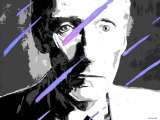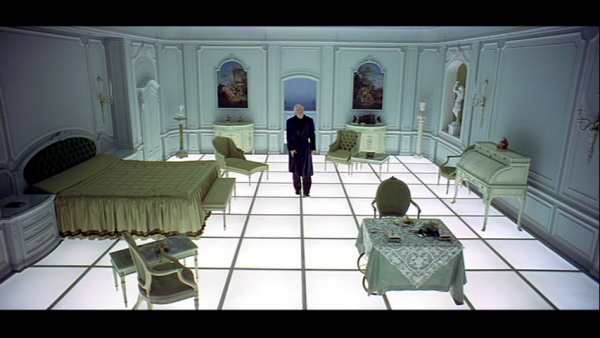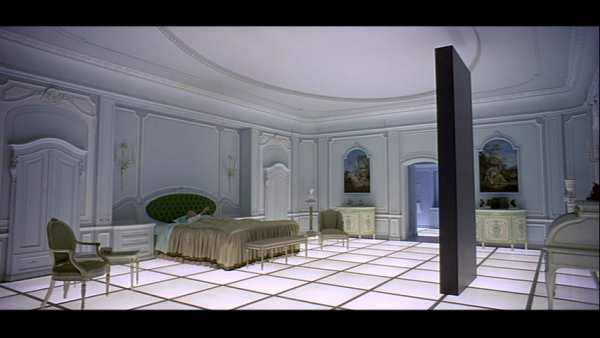 |
Old Bull Lee A Voice From the Reality-based Community Notes from a Study of Things Themselves |
 |
2001: The Novel Explains the Film
 |
Title:
2001: A Space Odyssey
Author: Arthur C. Clarke Publisher: New American Library/Signet Publication Date: 1968 Pages: 221 |
The movie 2001: A Space Odyssey was a collaborative effort of science fiction writer Arthur C. Clarke and film director Stanley Kubrick. Clarke wrote the film script, which was an expanded version of a short story he'd published many years earlier. At the same time he created his own version of the 2001 narrative in the form of a stand-alone novel. The film and novel bore the same title and they came out the same year, 1968.
The film's release caused widespread sensation. Viewers found it visually stunning. Some critics complained about the lack of dialogue. Nearly everyone was baffled by the ending. Nevertheless, audiences world-wide flocked to theaters showing the movie on especially wide screens. The film achieved commercial success and won innumerable awards.
A year after it came out, human beings walked on the moon for the first time. Meanwhile, Clarke's novel got no attention.
2001, with its 2.21:1 aspect ratio, didn't translate well to home TV screens. So, after it stopped being shown in theaters, it dropped out of sight for a few decades. But with the recent development of wide-screen, digital HD TVs and DVD/Blu-ray players, it's gained renewed interest.
In a recent DVD viewing I saw well-remembered scenes. The opening, entitled "The Dawn of Man." Apes in the desert. The appearance of the strange-looking slab. The ape throwing the bone in the air. Segue to the modern age, A.D. 1999. Astronauts standing in a big ditch on the moon. The slab appears again. The mission to Jupiter. Frank and Dave on board the wheel-shaped spaceship. The rebellion of HAL, the spaceship's computer. HAL expels Frank from the spaceship, but Dave manages to disable HAL's essential circuits and continues the journey under manual control. As the spaceship nears its destination, events turn surreal. Dave appears in an oddly furnished bedroom, alone. He lies in the bed and one of those mysterious slabs appears at the foot. Dave grows older before our eyes....
It's clear that the film is telling us something serious about technology. First, there's the discovery of tools by the apes, the first step in the development of technology, where pre-historic earth-creatures control the tools. Then, in the year 2001, a tool becomes so sophisticated that it develops its own agenda and attempts to control humans. Finally, there seems to be some resolution of the conflict, but the details are not obvious. What's with all those colors and that strange bedroom? And what are those slabs all about?
Clarke's Novel
Clarke's novel follows the same story line as the film with a few exceptions. One difference is that the destination of the space mission is not Jupiter but Saturn's moon Iapetus.
In Clarke's story the reader is told that three million years ago some conscious beings from many light years away had explored our solar system, where they noticed the first sparks of intelligent life. These beings left one of the large slabs on the moon of Saturn, anticipating that it would be discovered by the evolving intelligent life. That slab is called the "Star-Gate" and it is the doorway to a wormhole in space. At this point Clarke explains the strange slabs.
The first explorers of Earth had long since come to the limits of flesh and blood; as soon as their machines were better than their bodies, it was time to move. First, their brains, and then their thoughts alone, they transferred into shining new homes of metal and of plastic.
In these, they roamed among the stars. They no longer built spaceships. They were spaceships.
But the age of the Machine-entities swiftly passed. In their ceaseless experimenting, they had learned to store knowledge in the structure of space itself, and to preserve their thoughts for eternity in frozen lattices of light. They could become creatures of radiation, free at last from the tyranny of matter.
In other words, the slabs, which Clarke calls "monoliths" earlier in the story, represent congealed consciousness left by the ancient beings.
So Dave, in the spaceship Discovery, circles the Star-Gate for a while, transmitting his observations back to earth. To get a closer look, he approaches the Star-Gate in the space pod. The Star-Gate opens up and swallows him. His last words, as heard by Mission Control in Houston, are, "my God--it's full of stars."
Dave zooms through a duct in transdimensional space and eventually comes to rest some 20,000 light years away. He finds himself outside the pod, in the strange hotel suite, which we now understand to have been created entirely out of his own memory and imagination.
The monolith then reads out all thoughts and memories in Dave's mind and stores them in the structure of space itself. At this point Dave's consciousness begins a new life, freed from the constraints of his mortal body.
The key to understanding the film's ending is the awareness that the mysterious slabs are conscious beings and their consciousness is of a higher form than what might be found in humans or computers.
Why Kubrick chose to obscure this in his film may forever be a mystery.
Arthur C. Clarke Obituary
Arthur C. Clarke died March 19, 2007, aged 90. The New York Times ran a long obituary and devoted several paragraphs to 2001. An excerpt:The Cold War also forms the backdrop for "2001." Its genesis was a short story called "The Sentinel," first published in a science fiction magazine in 1951. It tells of an alien artifact found on the Moon, a little crystalline pyramid that explorers from Earth destroy while trying to open. One explorer realizes that the artifact was a kind of fail-safe beacon; in silencing it, human beings have signaled their existence to its far-off creators.
Enter Stanley Kubrick
In the spring of 1964, Stanley Kubrick, fresh from his triumph with "Dr. Strangelove or: How I Learned to Stop Worrying and Love the Bomb," met Mr. Clarke in New York, and the two agreed to make the "proverbial really good science fiction movie" based on "The Sentinel." This led to a four-year collaboration; Mr. Clarke wrote the novel and Mr. Kubrick produced and directed the film; they are jointly credited with the screenplay.
Many reviewers were puzzled by the film, especially the final scene in which an astronaut who has been transformed by aliens returns to orbit the Earth as a "Star-Child." In the book he demonstrates his new-found powers by detonating from space the entire arsenal of Soviet and United States nuclear weapons. Like much of the plot, this denouement is not clear in the film, from which Mr. Kubrick cut most of the expository material.
The penultimate sentence above misrepresents the the last page of Clarke's book. The nuclear weapons set off by the Star-Child are not the "entire arsenal" but are the ones orbiting the earth. (Obviously Clarke anticipated nukes in space by the year 2001.) Clarke writes, "...the circling megatons flowered in a silent detonation that brought a brief, false dawn to half the sleeping globe." The explosion would be silent because of the vacuum of space.
Missing "Expository Material" or False Memory?
My one and only viewing of the celluloid version of the film (as opposed to the DVD) was in 1969 at a military base in southeast Asia. At that time--the Vietnam War era--the military services showed first-run movies to entertain overseas soldiers and others on the bases. In my case I viewed the film at an amphitheater under the stars on a warm, tropical night.
From that memorable experience I recall three scene fragments that don't appear on the 2001 DVD. All three scene fragments could be considered "expository," illustrating the consciousness of the monoliths. There are at least two explanations. First, I might have mis-remembered. Second, and most interestingly, I might have seen a print containing material Kubrick cut from later versions shown to the public. It's known, for instance, that after the first premiere on April 2, 1968, Kubrick cut 19 minutes from the film. Could it be that I saw an uncut film print? Or, are the fragments below only false memories?
Fragment #1.

An ape is dancing and gesticulating in front of a monolith. A few frames later a visible beam comes out of the top of the monolith, striking the ape in the forehead. The ape stops dead still as the monolith seems to exercise mind control over the ape. The ape lifts one arm and slowly lets it down to his side. Then he slowly lifts his other arm and slowly lets it down.
Fragment #2.

At about this point in the film Dave is seen sitting at a table on which appears to be a thick, big city telephone directory. Dave reaches over and opens it up. The pages are completely blank. This suggests the room and its furnishings are not real but have been reconstructed from Dave's memory. Dave would remember what a phone book looked like but would not remember the names and numbers contained therein.
Fragment #3.

A few frames after this the monolith sends down a beam to Dave's head as he lies in bed. The beam comes from the top of the monolith and looks like the one that appeared in Fragment #1. The monolith can be assumed to be sucking up all of Dave's consciousness and storing it.
It's conceivable that a 2001 print containing the above scene fragments--each less than ten seconds--found its way into circulation around US overseas military bases in 1969.
Anyone who recalls these fragments is invited to share his memory by e-mailing bull [at] oldbulllee.com.